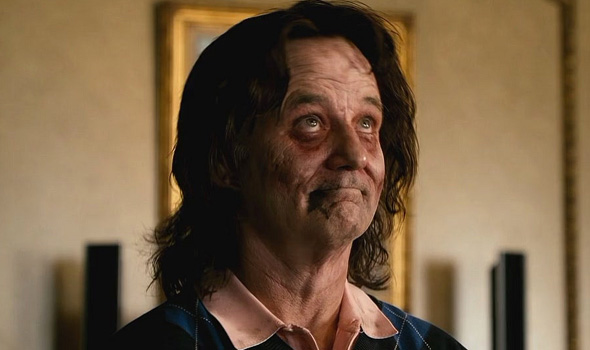
“We die. That may be the meaning of life. But we do language. That may be the measure of our lives.”
-Toni Morrison
Why exactly would we watch a movie? We know it’s merely an imitation yet we allow ourselves to suspend all rationality and commit to people and spaces that don’t exist. Why?
Metacinema attempts to answer that impossible question. It tampers with our suspension of disbelief and reminds us that we’re watching a film. It offers no escape. Unlike realism, it knows it’s a movie and it knows you’re watching.
The horror film, perhaps more than any other cinematic genre, deserves to be looked at through the metafictional lens.
Horror is characterised by a set of strict conventions and archetypes, and is all-too-often fascinated with voyeurism: the notion that a simple look can kill. Once more, horror relies on a greater suspension of disbelief than most genres; the audience must abandon all rationality and, for the sake of the film, believe in ghouls and monsters.
More than anything though the existence of the horror genre beggars the question: why would anyone invest their time and belief into a thing which attempts to repulse, scare and disturb them?
In relation to the above quote by Toni Morrison, language – in this case, film grammar – defines who we are. A horror movie may capture the nausea, the terror and the absurdity of our lives. It’s who we are.
This list contains some unconventional choices. Yet to truly understand what a horror film really is we must call upon to those on the fringe of the genre; those unorthodox movies which precariously stand on the edge, admiring the view. Most frightening of all is that they offer the clearest, most genuine perspective of ourselves and the films we watch.
We mustn’t cover our eyes.
1. Peeping Tom (1960)
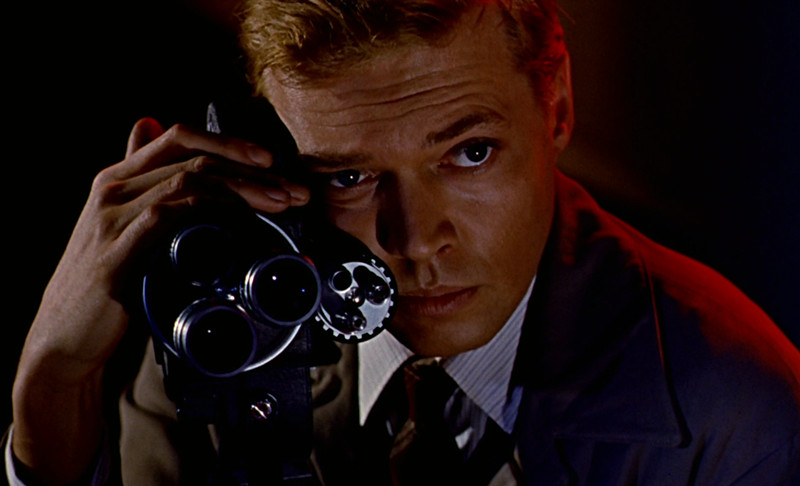
Michael Powell’s horror-cum-thriller was no smash-hit. It evoked a violently negative response in contemporary viewers who squirmed from the possibility that they, as an audience watching the murder unfold, were not merely an impartial observer.
The film follows a serial killer (Carl Boehm) who murders women in an attempt to film their dying expressions.
‘Peeping Tom’ stepped over the line; it reminds us of what we’re watching, and what we’re watching it for: pleasure. It’s fascinated with the gaze. Like the sympathetic killer, we receive pleasure from seeing women needlessly slaughtered in front of a camera yet we don’t know quite why we’re doing it.
The opening is unforgettable, and grounds the film in metacinema; we watch what appears to be a POV of the killer hunting his victim, before the tape suddenly repeats and we realise we’ve been watching a film.
Powell compares the murderer to the filmmaker, the victim to the actress, and the torture-room to the film set.
By fracturing the screen and merging the worlds of character and audience, ‘Peeping Tom’ deserves to stand shoulder to shoulder amongst the greatest horror films of all time. It proved that the eye and the subject are inseparable; the simple act of looking can kill.
2. Return of the Living Dead (1985)
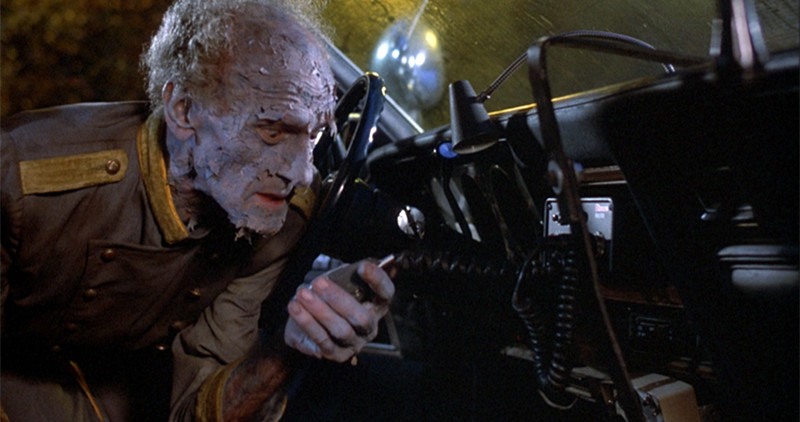
Dan O’Bannon’s “zom-com” is easily one of the best of its kind. At once horrific and hilarious, the film unusually – and very consciously – admits the sources that inspired it, and recognises itself as a genre film which must adhere to a list of tired tropes.
After a secret-government canister of deadly gas is released, the dead rise from the ground and terrorise three men and a group of punk-rock kids.
Similar to Lucio Fulci’s ‘Zombi 2’ which claimed, by name, to be a sequel to George Romero’s ‘Dawn of the Dead’, ‘Return of the Living Dead’ deceptively presents itself as a follow-up to the original ‘Night of the Living Dead’.
The reference itself isn’t in name alone however. Curiously the characters reference the film in dialogue; “did you ever see that movie, ‘Night of the Living Dead’?” they ask before purporting that it was a true case.
The film then follows many of the larger premises and conventions that appeared in the genre in the wake of Romero’s films: old strangers warning of danger, nuclear monsters, medical experiments gone wrong, outgoings to graveyards, sex-driven teenagers, cars not starting, governments destroying evidence and delightfully gruesome effects.
Each trope is so exaggerated that it’s underpinned with a kind of self-aware irony; “send more paramedics” a zombie demands in one of the film’s most absurd and memorable moments. It knows what it is and enthusiastically laughs in its own face.
Like other great zombie comedies of the time – ‘Night of the Creeps’, ‘The Evil Dead II’ and ‘Braindead’ – ‘Return of the Living Dead’ transcends mere rip-off and even homage. It acknowledges that it’s a film, and reminds the audience not to take it, or such films, so seriously.
3. Gremlins 2: The New Batch (1990)
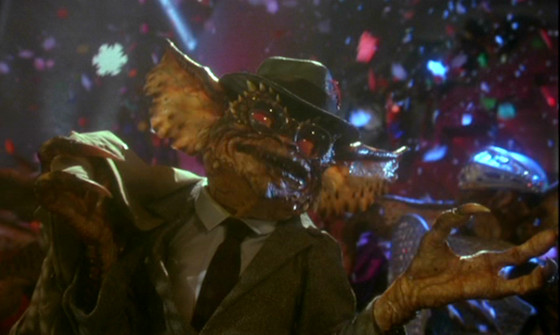
Joe Dante’s follow-up to his original ‘Gremlins’ is truly one of the most bizarre sequels ever made. Replacing the original’s chilling atmosphere and dark humour with slapstick violence, outright parody and unapologetic absurdity, Dante created an unusual mediation on the nature of cinematic sequels.
After the couple from the first film (Phoebe Cates and Zach Galligan) move to the big city, the Gremlins return and take over the ultra-modern skyscraper where they’re working.
‘Gremlins 2’ is “anti-sequel”. It abandons the small-town setting for the antithetic cityscape, kills off the antique dealer and their wise voicing of the “rules”, and mutates the creatures until they’re unrecognisable.
Horror films have a reputation for spawning endless franchises, and Dante uses the image of the megalomaniac and his castle as a metaphor for production companies churning out sequels purely in an attempt to replicate the success of the originals.
The blackness of the original ‘Gremlins’ is rewritten for a goofball, self-conscious tone. At different points the Gremlins parody ‘The Wizard of Oz’, ‘Marathon Man’ and ‘Rambo’ among others. In one instance the film actually stops and splits to the cinema playing the movie where Belinda Balaski, from the original film, is waiting to complain that the movie is worse than the first one.
‘Gremlins 2: The New Batch’ doesn’t state all sequels are worthless; it simply reminds us not to sit idly in the cinema and accept those watered-down “re-imaginings” which serve little purpose, but worse, do no justice to the legacies of the originals.
4. Army of Darkness (1992)
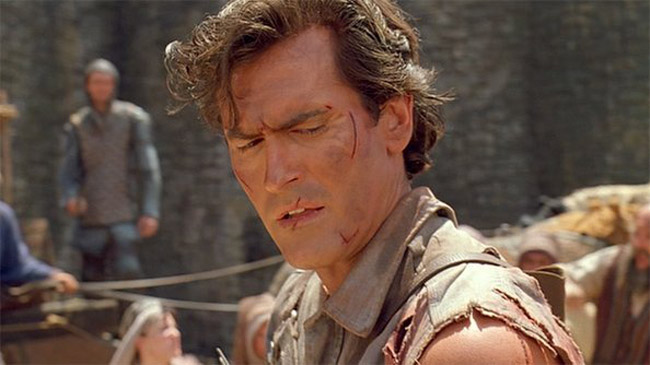
The final, outrageous instalment of Sam Raimi’s masterful ‘The Evil Dead’ trilogy conclusively shifted the balance from horror to comedy. Easily one of the finest, funniest and most downright fun zombie movies ever made, ‘Army of Darkness’ offers hilarious retrospect on the horror and action genres, and even on the two films that proceeded it.
After being accidently transported back in time to the Middle Ages, Ash (Bruce Campbell) must fight an army of undead and retrieve the Necronomicon Ex-Mortis – the Book of the Dead – so that he may return home.
Any one of ‘The Evil Dead’ films could have made an appearance on this list. There are tonal and narrative inconsistences throughout the trilogy; ‘The Evil Dead’ is mostly horror, ‘Army of Darkness’ is mostly comedy and ‘The Evil Dead II’ is somewhere in between. ‘The Evil Dead II’ remakes the first film in the first ten minutes then restarts practically where the first left off, and ‘Army of Darkness’ only bears a thin thread of relation to the film before it.
Film is not a replication of reality; it’s a fantasy tearing at the seams.
‘Army of Darkness’ is the most metafictional of all three. There’s self- parody in the doppelgängers and reanimated hands, obvious nods to horror legends like H.P Lovecraft and Ray Harryhausen in the charming visual effects, and self-conscious jabs at the misogyny dominating the action and horror genres in the 70s and 80s in Campbell’s laughably arrogant portrayal of Ash: “Gimme some sugar, baby.”
‘Army of Darkness’ belongs to one of greatest trilogies of all time. Whilst it admittedly has its “flaws”, strangely it is these apparent weaknesses which have pushed it to its cult martyrdom, earning it its deserved place among the greatest ever films of horror, comedy and metacinema.
5. Wes Craven’s New Nightmare (1994)
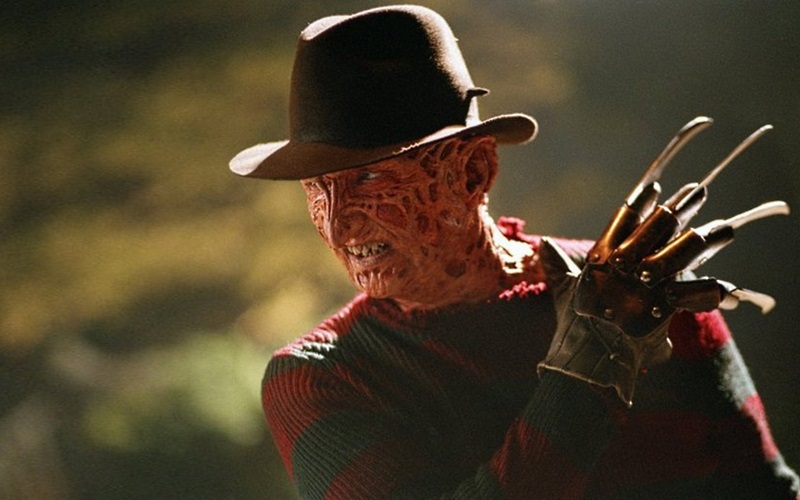
‘Wes Craven’s New Nightmare’ – the second best film in the ‘Nightmare on Elm Street’ franchise – served as an obvious precursor for ‘Scream’. Quite possibly the cleverest film in the series, it offers a take on the Hollywood dream and the perpetual life cycle of horror franchises that is at once ironic and nightmarish.
Heather Langenkamp (playing herself) must reprise her role as Nancy when an evil force, taking the identity of Freddy Kruger, invades reality to kill off the original film’s cast and crew.
Craven knew what a horror film was: a nightmare. Just like a nightmare, a horror film may stay with us long after the credits have rolled, even when we well know that it’s not real. We know Freddy is a fictional character, and yet he comes seeping into reality, just as many films do.
Craven, who at that time of ‘New Nightmare’ was growing weary of the slasher genre and who even stars in the movie, seems to be writing a kind of autobiography, admitting remorse for the children who have been “possessed” or corrupted after watching his films, while also describing the way in which horror movies have sucked up his life and come to define his career and who he is as a person.
‘New Nightmare’, along with ‘Dream Warriors’ and the original ‘A Nightmare on Elm Street’ stands as a masterwork in the franchise. One of the best and most original sequels ever made, it proves that once we see a horror film it no longer can be confined to our nightmares; it will leak out and become who we are.